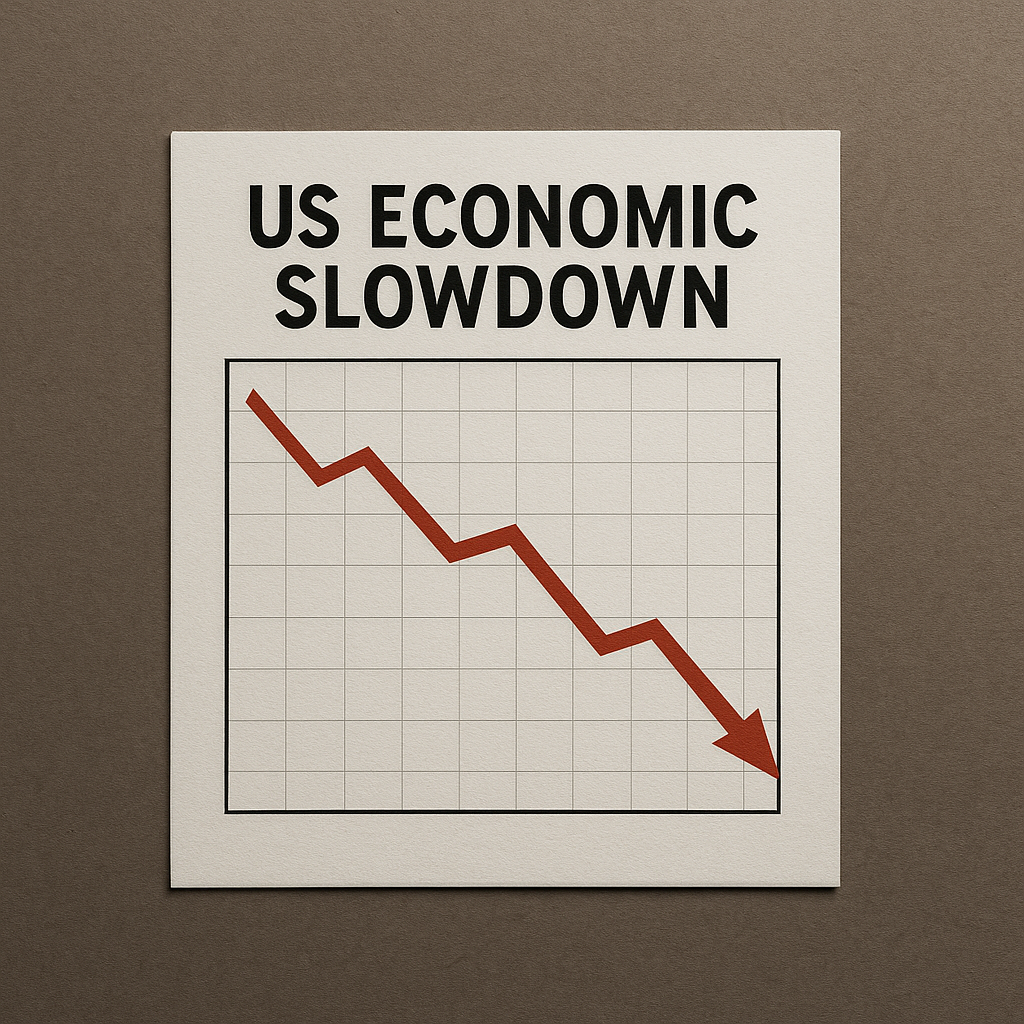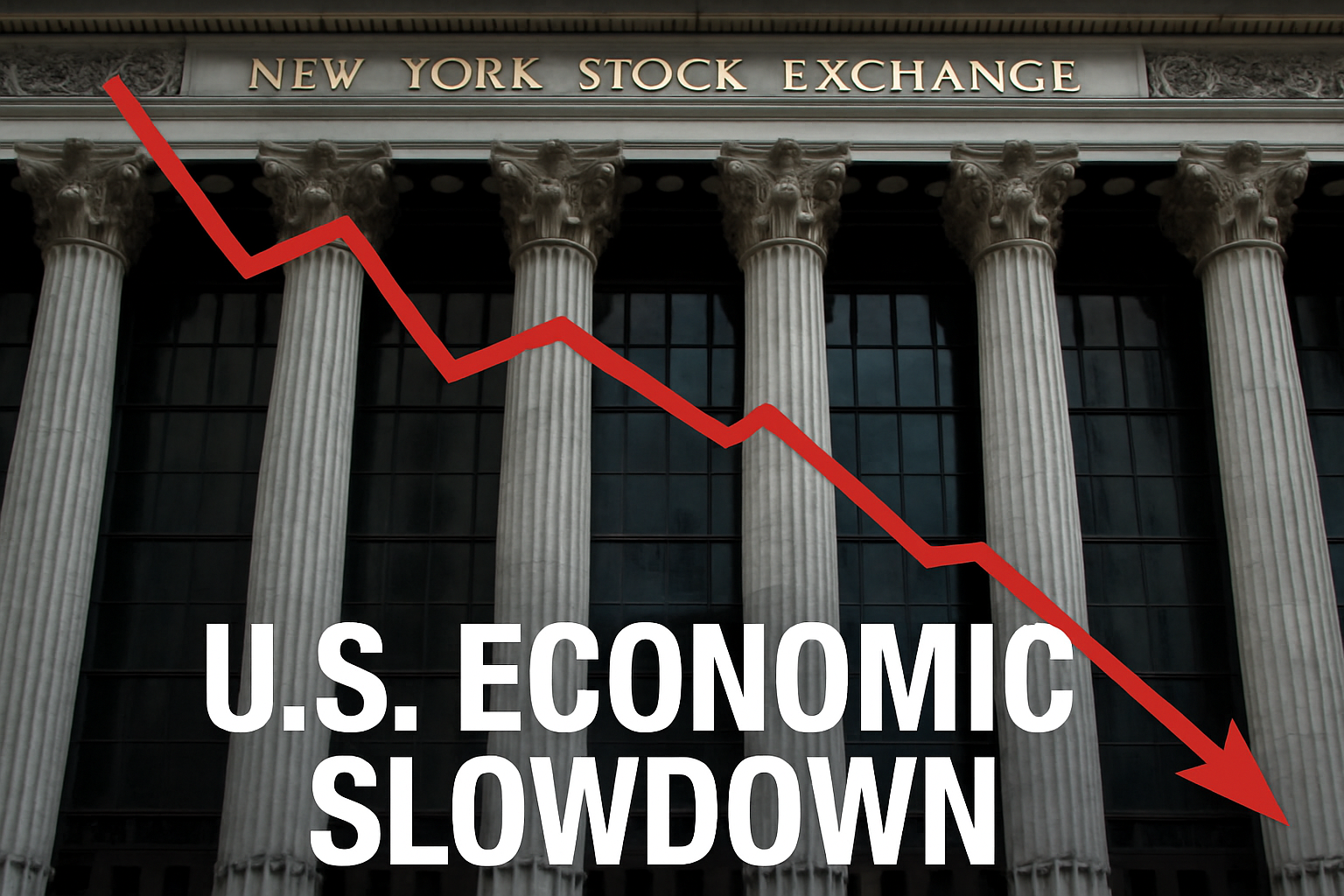The US economic slowdown is being hailed as a sign of moderation — a healthy correction, not a warning. That’s the new narrative from mainstream economists. But should we really be celebrating stagnation disguised as “stability”? As always, the surface looks calm. Underneath, the fractures are widening.
Context: The Mainstream’s Moderate Mantra
The most recent GDP reports show softer-than-expected growth. Retail sales have cooled. Employment numbers are stable, but no longer booming. Media outlets and think tanks rush to call this a “return to balance” — a slowdown, yes, but a constructive one.
The New York Fed’s Nowcast suggests a slight dip in expectations for Q3 2025 growth, while consumer sentiment hovers in a neutral zone. Inflation has decelerated — and that’s what gets celebrated. But “less bad” is not the same as good.
Oppositional Argument: This Is Not Stability
Here’s my take: this isn’t economic stabilization — it’s pre-stagnation. We’re seeing suppressed activity, not optimized efficiency. The US economy isn’t gracefully landing. It’s coasting dangerously on fumes.
Corporate investment is falling. Productivity remains flat. Wages, adjusted for inflation, haven’t moved meaningfully in over a year. If this is “balance,” then it’s built on erosion.
And while analysts cheer a slower pace, they conveniently ignore the consequences:
- Small businesses are struggling with credit access.
- Student loan repayments are back, straining consumer spending.
- Housing starts are declining again, even with stable interest rates.
Analytical Breakdown: The Data Behind the Drift
Let’s unpack some numbers:
- Real GDP grew only 0.8% in Q2 2025 (annualized).
- Capital expenditures declined by 1.3%, a sign of business hesitance.
- Consumer credit delinquency rose to 2.1% — the highest since 2020.
- New home sales dropped 6.5% month-over-month.
This isn’t a “moderation” — it’s economic fatigue. Sectors like manufacturing and logistics are retracting. Tech hiring has slowed. The only growing metric? Government debt, which crossed $35 trillion.

Human Perspective: The Middle-Class Squeeze
Talk to ordinary Americans, and the slowdown feels more like a squeeze. Gas is still over $4 in many states. Food prices remain high despite slowing inflation. Parents delay back-to-school purchases. Renters report 8–10% annual increases.
I met a small business owner in Ohio who closed two of his three bakery outlets. His reasoning? “People just aren’t spending like they used to. They’re worried. And so am I.”
Counterarguments: The Optimist’s Mirage
Defenders of the current state claim this is the “soft landing” the Fed wanted. Maybe — if your metric of success is avoiding collapse.
Others say: “Slower growth is better than inflation.” Sure. But why not aim higher? Why settle for flatlines when structural reform and investment could unlock real prosperity?
Conclusion: Don’t Mistake Survival for Success
The US economic slowdown is real — and it’s not some elegant deceleration. It’s a sign of systemic fatigue, not fiscal mastery. We shouldn’t praise the absence of chaos when beneath the surface, structural weaknesses deepen.
The recovery we’re told to believe in? It’s a narrative padded with hope, not substance.
It’s time we stop mistaking survival for success — and demand leadership that acts before stagnation becomes our new status quo.
External Links:
90 views